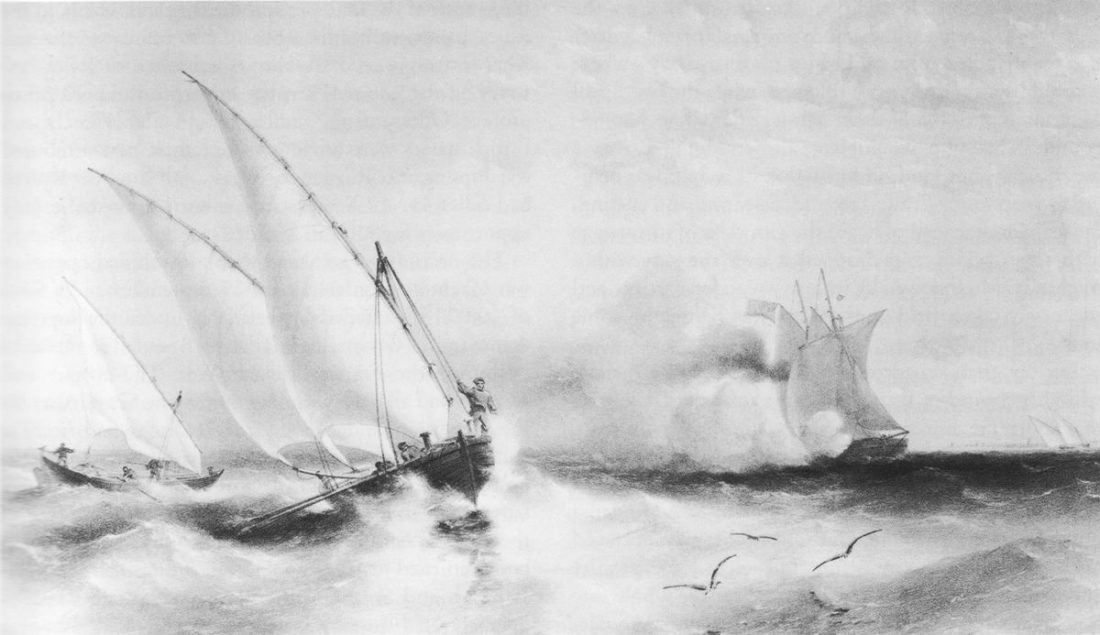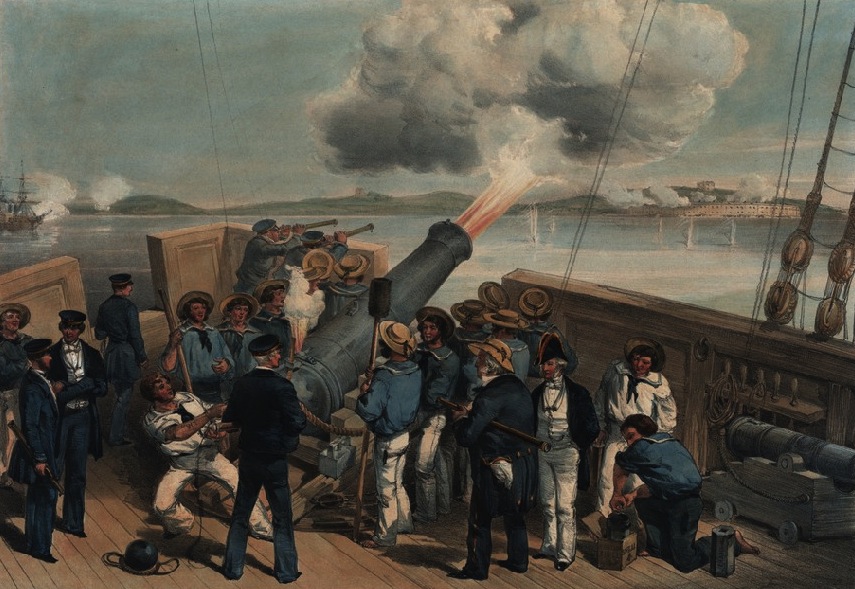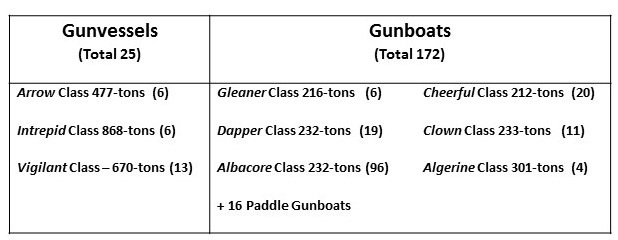Gunvessels and Gunboats of the 1860s
The latest Dawlish Chronicles free short story, Britannia’s Fist, is set on the Caribbean coast of Columbia in 1862 as a vicious civil war is petering out. (Details on how to get a copy are at the end of this article). A key role is played in this story by a 900-ton wooden gunvessel, HMS Foyle.
One tends to think of the Royal Navy in the mid-Victorian era as consisting of large ironclads, armoured successors to the ships-of-the-line that had dominated warfare in the Age of Fighting Sail. Such huge ships represented the core of Britain’s two main naval forces, the Channel and Mediterranean Fleets, but they were few in number compared with the swarms of smaller gunvessels and gunboats which undertook an almost endless variety of tasks across the globe.

HMS Grinder (R) of Dapper Class chasing Russian boats in the Sea of Azov 1855
One tends to think of the Royal Navy in the mid-Victorian era as consisting of large ironclads, armoured successors to the ships-of-the-line that had dominated warfare in the Age of Fighting Sail. Such huge ships represented the core of Britain’s two main naval forces, the Channel and Mediterranean Fleets, but they were few in number compared with the swarms of smaller gunvessels and gunboats which undertook an almost endless variety of tasks across the globe.
Gunvessels were still wooden-hulled in the 1860s, and they were intended for shore-bombardment, and for landing of small armed parties either for raids or to quell local disturbances. They were not designed to fight other warships and the type had come to be defined during the Crimean War (1854-56) in response to the need for small, shallow-draught, powerfully-armed vessels suited to inshore work. The typical “Crimea Gunvessel” – which was to see battle-service in the Baltic, the Black Sea, the Sea of Azov, and the China Coast in the years 1854-60 ranged in tonnage, depending on class, from 450 to 850 tons, depending on class. Main armament was typically two 68-pounder muzzle loaders. Smaller units, classed as “Gunboats”, were in the 200-300-ton range, typically armed with a single 68-pounder and a 32-pounder.

68-pounder bombarding Bomarsund in 1854
Sail-provisions, as well as steam-engines driving screws, were provided in all cases, an essential feature for making such units independent of reliable coal supplies in remote locations. In some classes the propellers could be hoisted from their shafts to lessen water-resistance when under sail, and funnels could also be telescopic. A shift from sail to steam power demanded the command “Up Funnel, Down Screw!” There were in addition small number of paddle-gunboats, a type going out of fashion rapidly due to the vulnerability of their paddle wheel.
The numbers of units in service in 1860 were quite astounding. In the table below the number of units in each class is shown in brackets, those that had been lost in China have been omitted:

The challenge of managing these enormous numbers – in providing supplies, crews and maintenance facilities on a worldwide basis – must have been daunting in the age before computers were available. One cannot but be impressed by the administration achievement.
A notable feature of these ships was that the names assigned to them were often whimsical or even bizarre. Many are called after birds or animals – Redwing, Skylark, Goldfinch, Hyena, Bullfrog etc. – but the idea of calling a warship Clown, Pert, Cheerful, Fancy, Tickler or Coquette is strange to say the least. One can imagine cynical Admiralty clerks or mischievous junior officers slipping in such names when their superiors have growing weary of the task of naming a class as large as the Albacores.

HMS Cherub of Britomart Class
The majority of the vessels mentioned above were taken out of service in the 1860s but the type – especially the gunvessels, which by their larger size made them suited to ocean passages and to extended service on foreign stations. Two classes of such gunvessels were constructed in the 1859 to 1867 period, with details as below:
Philomel Class – 20 units
570-tons, 145-foot, 380-hp Crew: 60
One 110-pounder, one 68-pounder, two 24-pounder howitzers, two 20-pounders
Cormorant Class – 9 units
877-tons, 185-foot, 775-hp Crew: 90
One 110-pounder, one 68-pounder, two 24-pounders
A final class of wooden gunboats – the Britomarts, were also built in this period:
Britomart Class – 20 units
330-tons, 120-foot, 260-hp Crew: 40
Two 68-pounders
